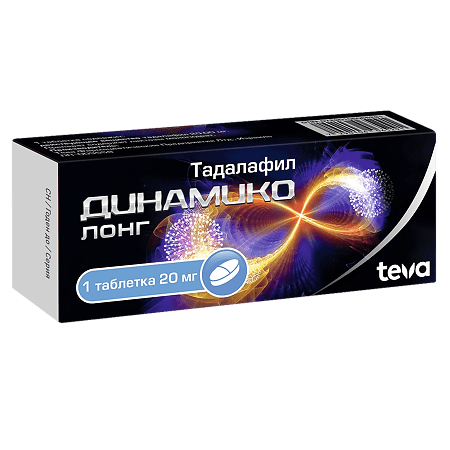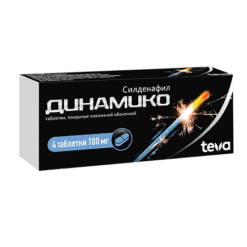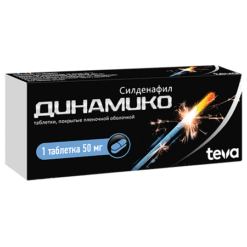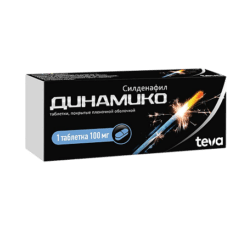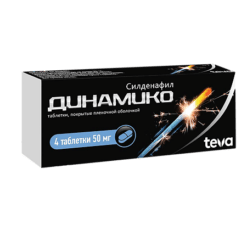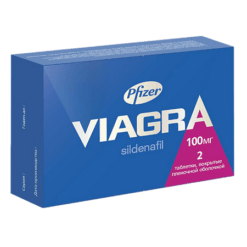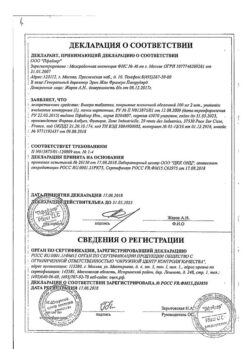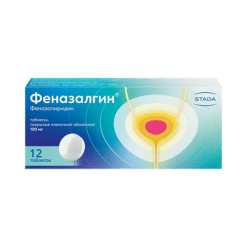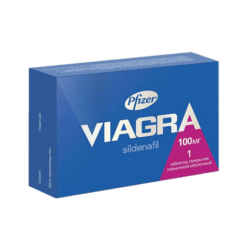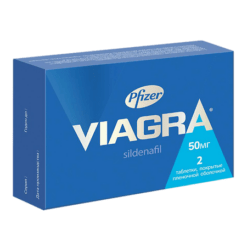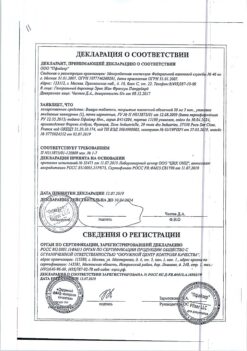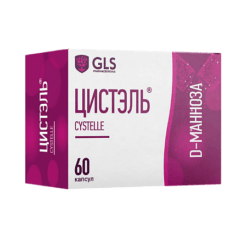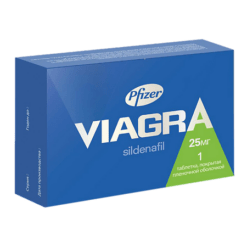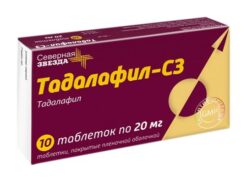No products in the cart.
Dynamico Long, 20 mg
€1.00
Out of stock
(E-mail when Stock is available)
Description
Pharmacotherapeutic group: erectile dysfunction treatment – FDE-5 inhibitor.
ATX code: G04BE08
Pharmacological properties
Pharmacodynamics
Mechanism of action
Tadalafil is a reversible selective inhibitor of specific cyclic guanosine monophosphate (cGMP) phosphodiesterase type 5 (FDE-5). When sexual arousal causes local release of nitric oxide, inhibition of FDE-5 by tadalafil leads to increased concentration of cGMP in the cavernous body of the penis. The consequence of this is relaxation of arterial smooth muscles and blood flow to the tissues of the penis, which causes an erection. Tadalafil has no effect in the treatment of erectile dysfunction in the absence of sexual arousal.
Benign prostatic hyperplasia (BPH)
Inhibition of FDE-5 by tadalafil, which leads to increased concentration of cGMP in the cavernous body of the penis, is also observed in the smooth muscles of the prostate, bladder, and vessels that supply blood to them. As a result, vascular smooth muscles relax, which leads to increase of blood perfusion and, as a consequence, to reduction of severity of BPH symptoms. Inhibition of afferent activity of bladder nerves and relaxation of smooth muscles of the prostate and bladder may additionally enhance vascular effects.
Pharmacodynamic Effects
The in vitro studies have shown that tadalafil is a selective inhibitor of FDE-5. FDE-5 is an enzyme found in the smooth muscles of the cavernous body, in vascular smooth muscles of internal organs, in skeletal muscles, platelets, kidneys, lungs and cerebellum. The action of tadalafil is more pronounced against FDE-5 than against other phosphodiesterases. Tadalafil is 10,000 times more active in blocking FDE-5 than FDE-1, FDE-2, FDE-4, and FDE-7 enzymes, which are found in the heart, brain, blood vessels, liver, white blood cells, skeletal muscle, and other organs. Tadalafil is 10,000 times more active in blocking FDE-5 than the FDE-3 enzyme, which is found in the heart and blood vessels. This selectivity for FDE-5 over FDE-3 is important because FDE-3 is an enzyme involved in heart muscle contraction. In addition, tadalafil is about 700 times more active in blocking FDE-5 than the enzyme FDE-6, which is found in the retina and is responsible for phototransmission. Tadalafil is 10,000 times more active in blocking FDE-5 than the enzymes FDE-8, FDE-9 and FDE-10.
Clinical efficacy and safety
Tadalafil in healthy volunteers causes no significant change in systolic and diastolic blood pressure compared to placebo in the lying position (mean maximum decrease is 1.6/0.8 mm Hg, respectively) and in the standing position (mean maximum reduction is 0.2/4.6 mmHg, respectively). Tadalafil causes no significant change in heart rate.
In a study evaluating the effect of tadalafil on vision, no color perception impairment (blue/green) was found using the Farnsworth-Mansell 100-color test, which is explained by the lower affinity of tadalafil for FDE-6 compared to FDE-5. In all clinical trials, reports of color vision disturbances were rare (< 0.1%).
To assess the potential effects of tadalafil on spermatogenesis, three studies were conducted with men using tadalafil at 10 mg (one 6-month study) and 20 mg (one 6-month and one 9-month study) daily. In two of these studies, there was a decrease in sperm count and concentration, the clinical significance of which is unlikely. These effects were not accompanied by changes in other parameters such as motility, morphology and follicle-stimulating hormone (FSH) levels.
Pharmacokinetics
.Absorption
Tadalafil is rapidly absorbed after oral administration. The average maximum plasma concentration (Cmax) is reached on average 2 hours after oral administration. The speed and degree of absorption of tadalafil do not depend on the time of food intake, so tadalafil can be used regardless of food intake. The time of ingestion (morning or evening) had no clinically significant effect on the speed and degree of absorption.
Distribution
The average volume of distribution is about 63 liters, indicating that tadalafil is distributed in body tissues. At therapeutic concentrations, 94% of tadalafil in plasma is bound to proteins. Protein binding is not altered in impaired renal function.
In healthy volunteers, less than 0.0005% of the administered dose is detectable in semen.
Metabolism
Tadalafil is mainly metabolized with participation of the CYP3A4 cytochrome P450 isoenzyme. The main circulating metabolite is methylcatecholglucuronide. This metabolite is at least 13,000 times less active against FDE-5 than tadalafil. Consequently, the concentration of this metabolite is not clinically relevant.
Elimation
In healthy volunteers, the average clearance of tadalafil when taken orally is 2.5 L/h and the average half-life is 17.5 hours. Tadalafil is mainly excreted as inactive metabolites, mainly through the intestine (about 61% of the dose) and, to a lesser extent, by the kidneys (about 36% of the dose).
Linearity/nonlinearity
The pharmacokinetics of tadalafil in healthy volunteers are linear with respect to time and dose. In the dose range of 2.5 to 20 mg, the area under the concentration-time curve (AUC) increases in proportion to the dose. Equilibrium plasma concentration is reached within 5 days when tadalafil is taken once daily.
The pharmacokinetics of tadalafil in patients with erectile dysfunction is similar to the pharmacokinetics of tadalafil in patients without erectile dysfunction.
Special patient groups
Elderly patients
Healthy volunteers aged 65 years and older had lower clearance of tadalafil when ingested, as reflected by a 25% increase in AUC compared with healthy volunteers aged 19 to 45 years. This difference is not clinically significant and does not require dose adjustment.
Renal Impairment
. In patients with mild renal impairment (creatinine clearance [CK] 60-89 ml/min) and moderate renal impairment (CK 30-59 ml/min), as well as in patients with end-stage renal failure on hemodialysis, tadalafil exposure (AUC) was approximately doubled. Cmax was 41% higher in hemodialysis patients compared to healthy volunteers. Excretion of tadalafil by hemodialysis is insignificant.
Hepatic Impairment
In a dose of 10 mg, tadalafil exposure (AUC) in patients with mild to moderate hepatic impairment (Child-Pugh Class A and B) is comparable to that in healthy volunteers. Clinical data are limited in patients with severe hepatic impairment (Child-Pugh class C). There are no data on daily use of tadalafil in patients with hepatic impairment. Prior to daily administration of tadalafil in patients with severe hepatic impairment, a risk-benefit assessment should be performed.
Patients with diabetes mellitus
Patients with diabetes mellitus on tadalafil had about 19% lower AUC compared to healthy volunteers. This difference does not require a dose adjustment.
Indications
Indications
Active ingredient
Active ingredient
Composition
Composition
1 tablet contains:
active ingredient tadalafil 2.50 mg/5.00 mg/10.00 mg/20.00 mg;
auxiliary substances: Lactose monohydrate (spray-dried) 44.125 mg/88.25 mg/176.50 mg/353.00 mg, sodium lauryl sulfate 0.375 mg/0.75 mg/1.50 mg/3.00 mg, povidone-K12 6.25 mg/12.50 mg/25.00 mg/50.00 mg, crosspovidone 6.25 mg/12.50 mg/25.00 mg/50.00 mg, sodium stearyl fumarate 0.50 mg/1.00 mg/2.00 mg/4.00 mg; film coating:. Opadray II 85F32782 yellow 2.00 mg/4.00 mg/7.00 mg/15.00 mg (polyvinyl alcohol partially hydrolyzed 0.800 mg/1.600 mg/2.800 mg/6.000 mg, macrogol-3350 0.404 mg/0.808 mg/1,414 mg/3.030 mg, titanium dioxide (E 171) 0.344 mg/0.688 mg/1.204 mg/2.580 mg, talc 0.296 mg/0.592 mg/1.036 mg/2.220 mg, iron oxide yellow dye (E 172) 0.156 mg/0.312 mg/0.546 mg/1.170 mg).
How to take, the dosage
How to take, the dosage
Ingestion with just enough water to swallow the tablet.
Application of DYNAMIKO LONG for the indication of erectile dysfunction (ED).
For patients with frequent sexual activity (more than twice a week): the recommended frequency of administration is daily, once daily, 5 mg, at the same time, regardless of meal times. The daily dose may be reduced to 2.5 mg, depending on individual sensitivity.
The appropriateness of daily use should be reviewed periodically.
For patients with infrequent sexual activity (less than twice weekly):
The recommended dose is 20 mg before anticipated sexual activity, regardless of food intake. The drug should be taken at least 30 minutes before intended sexual activity.
The maximum recommended frequency of administration is once daily.
Tadalafil at a dose of 20 mg is intended for use before anticipated sexual activity and is not recommended for continuous daily use.
The use of DYNAMIKO LONG for the indication of benign prostatic hyperplasia (BPH) or ED/DPH.
The recommended dose of DYNAMIKO LONG is 5 mg; the drug should be taken approximately at the same time each day regardless of meals. For adult men treated for both benign prostatic hyperplasia and erectile dysfunction, the recommended dose is also 5 mg, which should be taken at approximately the same time each day.
Special patient groups
Elderly patients
In elderly patients, no dose adjustment is necessary.
Renal failure
In patients with mild renal failure (CK – 60-89 ml/min) and moderate renal failure (CK – 30-59 ml/min), no dose adjustment is required. In patients with severe renal failure (creatinine clearance < 30 ml/min and on hemodialysis) the maximum recommended dose when used on demand is a dose of 10 mg.
The daily administration of tadalafil at doses of 2.5 or 5 mg for both erectile dysfunction and benign prostatic hyperplasia is not recommended in patients with severe renal impairment.
Hepatic insufficiency
In treating erectile dysfunction with tadalafil on demand, the recommended dose is 10 mg, which is taken before intended sexual activity regardless of food intake.
There are limited clinical data on the safety of tadalafil in patients with severe hepatic impairment (Child-Pugh class C), so a careful individual evaluation of the benefit-risk ratio should be performed before prescribing this medication. There are no data on the use of tadalafil in doses greater than 10 mg in patients with hepatic impairment.
The daily use of tadalafil for both erectile dysfunction and benign prostatic hyperplasia has not been evaluated in patients with hepatic impairment, so a careful individual benefit-risk assessment must be performed by the physician when prescribing this medication.
Diabetes mellitus
In patients with diabetes mellitus, a dose adjustment of the drug is not required.
Interaction
Interaction
Effects of other drugs on tadalafil
Cytochrome inhibitorsP450
Tadalafil is primarily metabolized with participation of the CYP3A4 isoenzyme. The selective CYP3A4 isoenzyme inhibitor ketoconazole at a dose of 200 mg daily increases AUC of tadalafil (10 mg) by 2-fold and Cmax of tadalafil by 15% compared to the AUC and Cmax values when using tadalafil in monotherapy. And ketoconazole at a dose of 400 mg per day increases the AUC of tadalafil (20 mg) by 4 times and the Cmax of tadalafil by 22%.
Ritonavir (200 mg twice daily), an inhibitor of the CYP3A4, CYP2C9, CYP2C19, and CYP2D6 isoenzymes, increases the AUC of tadalafil (20 mg) 2-fold without changing Cmax. Although specific interactions have not been studied, it can be assumed that other HIV protease inhibitors, such as saquinavir, as well as CYP3A4 isoenzyme inhibitors such as: erythromycin, clarithromycin, itraconazole and grapefruit juice, may increase plasma concentrations of tadalafil.
Transporters
The role of transporters (e.g., P-glycoprotein) in the distribution of tadalafil is unknown. There is a possibility of drug interactions mediated by inhibition of transporters.
Cytochrome inducers P450
. The selective inducer of CYP3A4 isoenzyme, rifampicin, reduces the AUC value of tadalafil by 88% compared to the AUC values of tadalafil monotherapy (10 mg). The efficacy of tadalafil may be reduced; the extent of the reduction is unknown. Concomitant use of other CYP3A4 isoenzyme inducers (such as phenobarbital, phenytoin or carbamazepine) may also be expected to decrease plasma concentrations of tadalafil.
Influence of tadalafil on other drugs
Nitrates
Tadalafil has been shown in clinical studies to increase the hypotensive effects of nitrates. Therefore, the use of tadalafil while taking any form of organic nitrates is contraindicated. Clinical studies in which patients received tadalafil at a dose of 20 mg and sublingual nitroglycerin at a dose of 0.4 mg daily for 7 days at different times have shown that the interaction lasts for more than 24 hours and is not detected after 48 hours after the last intake of tadalafil. Thus, in patients receiving either dose of tadalafil, if nitrates are medically necessary in a life-threatening situation, at least 48 hours must elapse after the last drug intake in order to be able to administer the nitrate. Under such circumstances, nitrates should be administered under close medical supervision with appropriate hemodynamic monitoring.
Hypotensive drugs (including slow calcium channel blockers)
Taking doxazosin (4 and 8 mg daily) in combination with tadalafil (daily doses of 5 mg and 20 mg as a single dose) significantly increases the antihypertensive effect of this alpha1-adrenoblocker. This effect lasts at least twelve hours and may be symptomatic, including syncope. Therefore, this combination of drugs is not recommended.
In drug interaction studies with alfuzosin or tamsulosin conducted with a limited number of healthy volunteers, no such effects have been reported. Nevertheless, caution should be exercised when using tadalafil in patients (especially the elderly) receiving alpha-adrenoblockers. Treatment should begin with the lowest dose and be gradually adjusted.
The potential of tadalafil to enhance the antihypertensive effects of hypotensive medications has been studied in clinical pharmacological studies. Major classes of hypotensive drugs, including slow calcium channel blockers (amlodipine), angiotensin-converting enzyme inhibitors (enalapril), beta-adrenergic receptor blockers (metoprolol) were studied, Thiazide diuretics (bendrofluazide) and angiotensin II receptor antagonists (various types and doses, alone or in combination with thiazides, slow calcium channel blockers, beta-adrenoblockers and/or alpha-adrenoblockers). Tadalafil (10 mg, except in studies with angiotensin II receptor antagonists and amlodipine, in which a dose of 20 mg was used) did not exhibit clinically significant interactions with any of the above classes of drugs. Another clinical pharmacology study examined the use of tadalafil (20 mg) in combination with 4 classes of hypotensive drugs. In participants receiving multiple hypotensive medications, fluctuations in ambulatory measured blood pressure appeared to be related to the degree of blood pressure control. In study participants whose blood pressure was well controlled, the decrease was minimal and similar to that observed in healthy volunteers. In participants whose blood pressure was not controlled, the decline was more pronounced, although in most subjects it was not accompanied by hypotensive symptoms. In patients receiving concomitant antihypertensive treatment, tadalafil at a dose of 20 mg may cause a minor (except on alpha blockers) decrease in blood pressure that is likely not clinically significant. Analysis of data from phase III clinical trials showed no difference in the profile of adverse reactions reported in patients receiving tadalafil in monotherapy and in combination with hypotensive drugs. Nevertheless, appropriate clinical advice should be given to patients receiving hypotensive drugs regarding possible blood pressure reductions.
Riociguat
Riociguat has been shown in clinical studies to enhance the hypotensive effects of FDE-5 inhibitors. There was no evidence of a favorable clinical effect of the combination in the patient population analyzed. Concomitant administration of riociguat with FDE-5 inhibitors, including tadalafil, is contraindicated.
5-alpha reductase inhibitors
Tadalafil and 5-alpha reductase inhibitors have not been studied for drug interaction, and caution should be exercised when taking them concomitantly.
Substrates CYP1A2 (e.g., theophylline)
No pharmacokinetic interaction was reported when tadalafil was used at a dose of 10 mg with theophylline (a nonselective phosphodiesterase inhibitor) in a clinical pharmacological study. The only pharmacodynamic effect was a slight (3.5 bpm) increase in heart rate. Although this effect is insignificant and had no clinical significance in this study, it should be considered when using these drugs together.
Ethinylestradiol and terbutaline
Tadalafil causes increased bioavailability of ethinylestradiol when taken orally. A similar increase in bioavailability can be expected with oral terbutaline, but clinical implications have not been established.
Alcohol
Tadalafil (10 mg or 20 mg) had no effect on alcohol concentration (mean maximum blood concentration 0.08%) when co-administered, nor did alcohol affect tadalafil concentration 3 hours after co-administration. Alcohol was taken in such a way as to maximize its absorption rate (in the morning on an empty stomach with abstinence from food for 2 hours after consumption). At high doses of alcohol (0.7 g/kg), tadalafil administration did not cause a statistically significant decrease in mean blood pressure. Postural dizziness and orthostatic hypotension were observed in some patients. When tadalafil was taken in combination with lower doses of alcohol (0.6 g/kg), no decrease in blood pressure was observed, and dizziness occurred with the same frequency as with alcohol alone.
Tadalafil (10 mg) did not increase the effect of alcohol on cognitive function.
Drugs metabolized by cytochrome P450
. Tadalafil has no clinically significant effect on the clearance of drugs whose metabolism involves cytochrome P450 isoenzymes.
The studies confirmed that tadalafil does not inhibit or induce CYP1A2, CYP3A4, CYP2C9, CYP2C19, CYP2D6, CYP2E1 isoenzymes.
CYP2C9 substrates (e.g., R-warfarin)
Tadalafil (10 mg and 20 mg) has no clinically significant effect on the AUC of S-warfarin or R-warfarin. Tadalafil has no effect on the effect of warfarin on prothrombin time.
Aspirin
Tadalafil (10 mg and 20 mg) does not potentiate the increase in the duration of bleeding caused by taking acetylsalicylic acid.
Hypoglycemic drugs
There have been no interaction studies with hypoglycemic drugs.
Special Instructions
Special Instructions
Before initiating therapy with tadalafil, a medical history and physical examination must be taken to diagnose erectile dysfunction or benign prostatic hyperplasia and to determine possible causes.
Physicians should consider the cardiovascular status of their patients before starting any treatment for erectile dysfunction because there is a degree of cardiac risk associated with sexual activity. Tadalafil has vasodilator properties, which leads to a slight transient decrease in blood pressure and thus increases the hypotensive effect of nitrates.
Before starting treatment with tadalafil for BPH, patients should be examined to rule out the presence of prostate cancer and a thorough cardiovascular evaluation should be performed.
The diagnosis of erectile dysfunction should include identification of the underlying potential cause, appropriate physical examination, and determination of treatment tactics.
The efficacy of tadalafil in patients who have undergone pelvic surgery or radical prostatectomy without preservation of the neurovascular bundles is unknown.
Cardiovascular system
. Serious cardiovascular complications, including myocardial infarction, sudden cardiac death, unstable angina, ventricular arrhythmias, stroke, transient ischemic attacks, chest pain, palpitations and tachycardia have been reported from post-registration surveillance and/or clinical studies. Most patients in whom these adverse reactions were reported had a history of cardiovascular risk factors. However, it cannot be conclusively determined whether these adverse reactions are directly related to risk factors, tadalafil intake, sexual activity, or a combination of the two.
In patients receiving concomitant antihypertensive therapy, tadalafil may cause a decrease in blood pressure. Before starting daily administration of tadalafil, consideration should be given to a possible adjustment of the dose of hypotensive drugs.
In patients who take alpha1-adrenoblockers, concomitant administration of tadalafil may in some cases lead to symptomatic hypotension. Taking tadalafil in combination with doxazosin is not recommended.
Sight
When taking tadalafil and other FDE-5 inhibitors, there have been cases of visual impairment and development of NAPION. Analysis of these observations suggests an increased risk of acute NAPION in men with erectile dysfunction after exposure to tadalafil or other FDE-5 inhibitors. Because this applies to all patients receiving tadalafil, they should be advised that they should stop taking tadalafil and see a physician immediately if there is a sudden visual disturbance.
Decreased or sudden hearing loss
There have been reported cases of sudden hearing loss after tadalafil use. Although other risk factors (such as age, diabetes, arterial hypertension, and history of hearing loss) were present in some cases, discontinuing tadalafil and promptly seeking medical attention should be recommended if sudden hearing loss or reduction occurs.
Renal and hepatic impairment
Because of the elevated AUC values, limited clinical experience, and lack of ability to affect clearance by dialysis, daily tadalafil administration is not recommended in patients with severe renal impairment.
There is limited clinical data on the safety of daily tadalafil administration in patients with severe hepatic impairment (Child-Pugh class C). Daily administration of tadalafil both for treatment of erectile dysfunction and benign prostatic hyperplasia in patients with hepatic insufficiency has not been evaluated. Therefore, when prescribing DYNAMIKO LONG, a physician should perform a careful individual assessment of the benefit-risk ratio of its use.
Priapism and anatomical deformity of the penis
There have been reports of priapism when using FDE-5 inhibitors, including tadalafil. Patients should be informed to seek immediate medical attention if an erection lasts 4 hours or more. Failure to treat priapism in a timely manner leads to penile tissue damage, which may result in irreversible impotence.
Tadalafil should be used with caution in patients with anatomical deformities of the penis (angular curvature, cavernous fibrosis, or Peyronie’s disease) or in patients with a predisposition to priapism (in sickle cell anemia, multiple myeloma, or leukemia).
The use of inhibitors CYP3A4
. Caution should be exercised when prescribing DINAMICO LONG in patients using CYP3A4 (ritonavir, saquinavir, ketoconazole, itraconazole and erythromycin) because increased AUC values of tadalafil were observed when these drugs were used together.
DINAMICO LONG and other erectile dysfunction drugs
The safety and effectiveness of combinations of tadalafil with other FDE-5 inhibitors and erectile dysfunction treatments have not been studied, so these combinations are not recommended.
Influence on driving and operating machinery
Tadalafil has minimal effect on the ability to drive and operate machinery. Although the incidence of dizziness on placebo and tadalafil is similar, during treatment, caution should be exercised when driving vehicles and operating machinery, engaging in other potentially dangerous activities requiring increased concentration and rapid psychomotor reactions.
Synopsis
Synopsis
Dosage 2.5 mg: Round biconvex film-coated tablets, light yellow to yellow with brownish tint, with “2.5” embossed on one side.
Dosage 5 mg: oval biconvex film-coated tablets, light yellow to yellow with a brownish tint, with “5” embossed on one side.
Dosage 10 mg: oval biconvex film-coated tablets from light yellow to yellow with a brownish tint, with a rib and embossing “1” to the left of the rib and “0” to the right of the rib on one side.
Dosage 20 mg: oval biconvex film-coated tablets from light yellow to yellow with a brownish tint, with a rib and embossing “2” to the left of the risk and “0” to the right of the risk on one side.
Contraindications
Contraindications
With caution
Side effects
Side effects
The most common adverse reactions in patients with erectile dysfunction and BPH were headache, dyspepsia, and back pain and myalgia, the frequency of which increased with increasing dose of tadalafil.
The adverse reactions were usually mild to moderate and transient. Most of the headaches reported with daily tadalafil use occurred within the first 10-30 days of starting treatment.
The following are the adverse reactions that have been reported during clinical trials and with post-registration use of tadalafil on demand or daily for the treatment of erectile dysfunction and with daily use for the treatment of BPH. The WHO classification categorizes all reactions by organ system and frequency of occurrence: very common (â¥1/10); common (â¥1/100, < 1/10); infrequent (â¥1/1000, < 1/100); rare (â¥1/10000, < 1/1000); very rare (< 1/10000); frequency unknown (cannot be determined based on available data).
Immune system disorders: infrequent- hypersensitivity reactions; frequently- angioedema2.
Nervous system disorders: often- headache; not infrequently- dizziness; frequently- stroke1 (including acute hemorrhagic circulatory disorder), syncope, transient ischemic attacks1, migraine2, seizures2, transient amnesia.
Visual disturbances: infrequent- blurred vision, pain in the eyeball;rarely- visual field disturbances, swollen eyelids, conjunctival hyperemia, NAPION2, retinal vascular occlusion2.
Hearing and labyrinth disorders: infrequent- tinnitus;
not infrequent- sudden hearing loss.
Cardiac disorders1: infrequent- tachycardia, palpitations;rarely- myocardial infarction, ventricular rhythm disturbances2, unstable angina2.
Vascular disorders: often-“flushes” of blood to the face;not infrequently- decreased blood pressure3, increased blood pressure.
Disorders of the respiratory system, thorax and mediastinum: often – nasal congestion;not infrequently – dyspnea, nasal bleeding.
Gastrointestinal tract disorders: frequently – dyspepsia;not infrequently – abdominal pain, gastroesophageal reflux, vomiting, nausea.
Skin and subcutaneous tissue disorders: infrequent- skin rash;rarely- urticaria, Stevens-Johnson syndrome2, exfoliative dermatitis2, hyperhidrosis (increased sweating).
Muscular and connective tissue disorders: often – back pain, myalgia, pain in the extremities.
Recreational and urinary tract disorders: infrequent – hematuria.
Renital and breast disorders: infrequent – prolonged erection;rarely – priapism, hematospermia, bleeding from the penis.
General disorders: infrequent- chest pain1, peripheral edema, fatigue;rarely- facial edema2, sudden cardiac death1,2.
1 Observed in patients with previous cardiovascular risk factors.
But it is not possible to definitively determine whether these adverse reactions are directly related to the aforementioned risk factors, to tadalafil, to sexual arousal, or to a combination of these or other factors.
2 Unwanted reactions identified with post-marketing use that have not been observed in clinical placebo-controlled studies.
3 More commonly observed when tadalafil was used in patients already taking hypotensive agents.
Description of individual adverse reactions
A slightly higher incidence of abnormal ECG parameters, primarily sinus bradycardia, was reported among patients who received tadalafil once daily compared with placebo. Most of these abnormalities were not accompanied by adverse clinical events.
Other specific patient populations
There are limited data from clinical studies of patients over 65 years of age receiving tadalafil for the treatment of erectile dysfunction or BPH. In clinical trials with on-demand tadalafil for the treatment of erectile dysfunction, diarrhea was more frequently reported among patients over 65 years of age. In clinical trials with daily use of tadalafil at a dose of 5 mg to treat BPH, dizziness and diarrhea were more frequently reported among patients over 75 years of age.
Overdose
Overdose
Pregnancy use
Pregnancy use
Similarities
Similarities
Additional information
| Shelf life | 2 years. Do not use after the expiration date. |
|---|---|
| Conditions of storage | Store at temperatures under 25 C. Keep out of reach of children! |
| Manufacturer | Teva Pharmaceutical Enterprises Ltd, Israel |
| Medication form | pills |
| Brand | Teva Pharmaceutical Enterprises Ltd |
Other forms…
Related products
Buy Dynamico Long, 20 mg with delivery to USA, UK, Europe and over 120 other countries.

